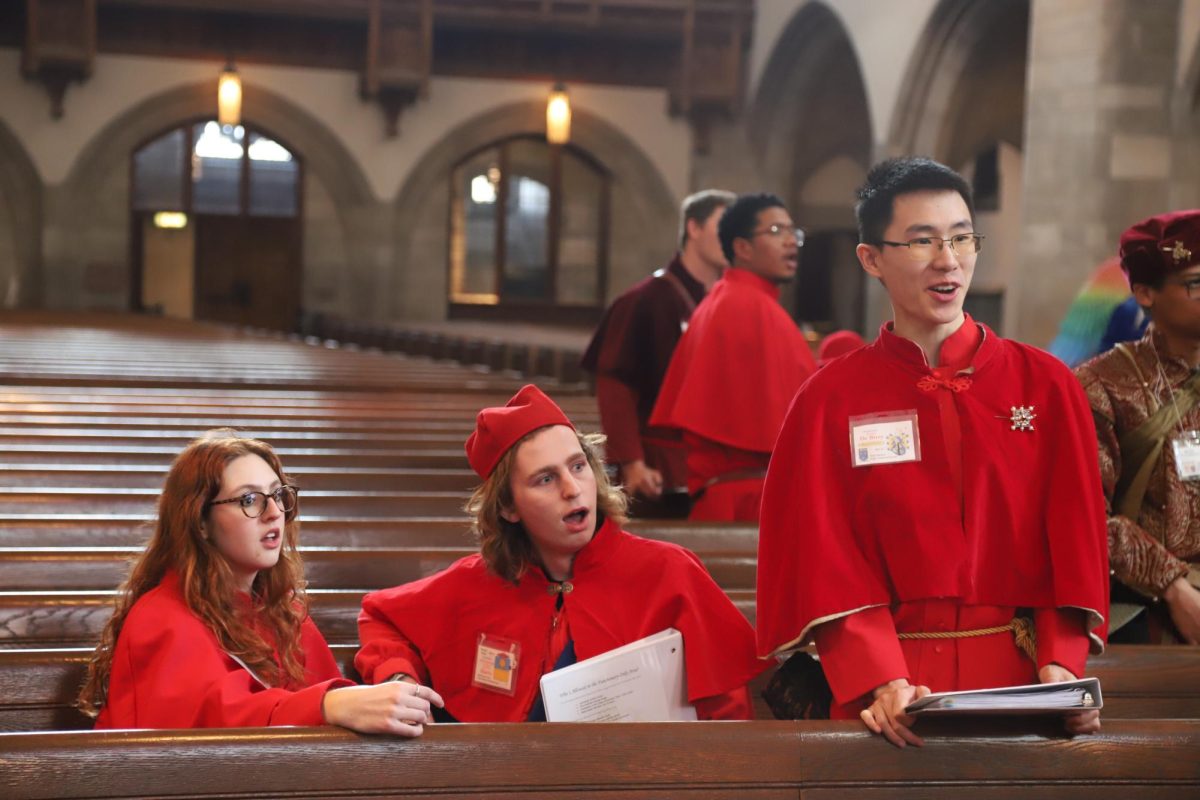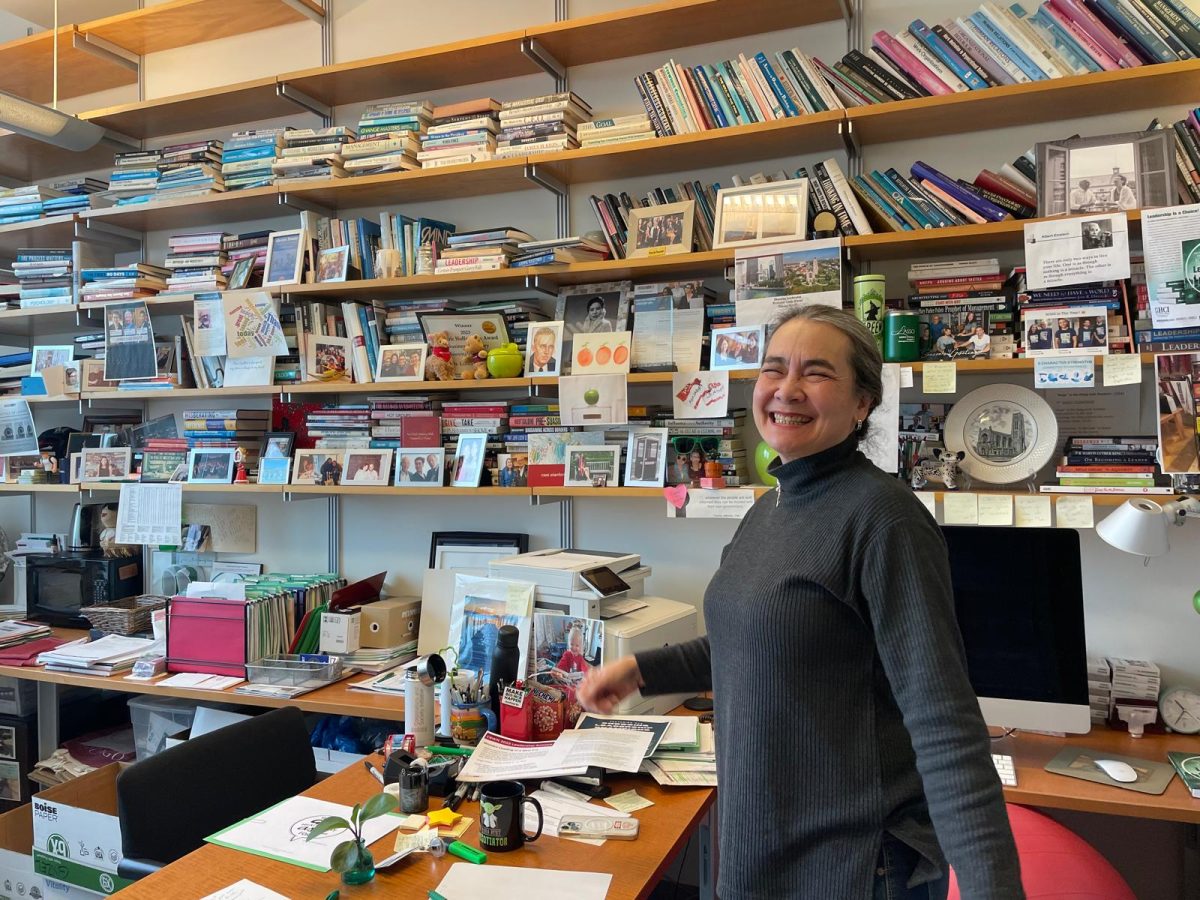To view the complete version of this article, click here.
The high cost of elite education is not a recent development. In 1903, Amos Alonzo Stagg, who was then Chicago’s head football coach, was accused of using underhanded recruiting practices to lure Walter Eckersall to the University. Eckersall had been the stand-out quarterback on Hyde Park High School’s national championship team the year before, but Stagg’s detractors still thought it improbable that Eckersall’s family would pay the University’s exorbitant $120 annual tuition instead of sending their son to play at Michigan, which was nearly free.
Stagg vigorously defended himself to the Chicago Tribune, but still lamented the cramp Chicago’s tuition put on his recruiting efforts. “It is important to note that the University’s…tuition fee prevents much good athletic material from coming.”
Tuition increases at private universities outpacing inflation is not a new phenomenon either. In his book Tuition Rising, Cornell University economics professor Ronald Ehrenberg points out that for most of the 20th century, increases in tuition at the most selective universities were a couple points above the corresponding rise in the consumer price index.
What has changed dramatically over the past three or four decades is the rate at which tuition has risen in comparison to income. While tuition at top schools as a percentage of median income held steady at around 25 percent throughout the middle of the 20th century, by the late 1970s, income growth was no longer tracking rises in tuition. The result is that today, selective private universities charge tuition rates that can approach 70 percent of the United States’ median household income.
The simplest explanation for high tuition costs at schools like the U of C is that the education and opportunities they provide far outstrip those offered at less selective schools. These are benefits, the thinking goes, that can only be had at a place like the U of C, and so such schools generate tremendous demand among students and their parents, which allows those colleges to raise prices.
In this way, some critics argue, the reputations of top colleges feed themselves, and increases in tuition at those schools only beget further increases. More tuition can go toward better professors, larger support staffs, state-of-the-art facilities, and dorms designed by eminent architects—all things that add to a college’s real and perceived value, bringing in more applicants willing to pay ever higher tuition.
It’s a compelling case, but two factors suggest schools aren’t raising tuition simply because student demand allows them to do so. First, the pecking order among colleges and universities has been long established. By the 1910s, there were published rankings of American universities, which were strikingly similar to those in today’s U.S. News & World Report and reflected broader public opinion of the institutions. The schools we consider the “most elite” today have long been the most sought-after providers of higher education, but it wasn’t until relatively recently—the 1960s—that the top tier of American universities began upping their price tags at a rate far exceeding inflation. And while baby boomers leaving for college in the 1960s might have raised demand and permitted increases in price, demand alone can’t account for the unabated rise in tuition in later decades, when the size of the college-age cohort was at times constant or decreasing.
Another often-cited culprit behind tuition increases are the superior facilities, student services, and other perks offered by top schools. Some argue that elite schools pass the cost of those perks along to students in the form of increased tuition, and then, once the buildings are built and the new services implemented, demand to attend the elite schools increases, and those schools can raise tuition prices even further.
This explanation doesn’t quite hold water in the U of C’s case. The burst of new construction and the expansion in undergraduate services didn’t start until the last decade or so, long after tuition took off on its meteoric rise. And as Dean of the College John Boyer notes, those improvements were largely funded by donations and by the endowment, not by students’ tuition dollars.
The costs universities face—and students pay for—have risen for other reasons, though. Pressure on elite universities to compete with one another, and to maintain their recruiting edge over lesser-regarded schools, has led to significant increases in expenses. These expenses range from facilities maintenance to office supply purchases to payments for postage and shipping (which, incidentally, cost the U of C more than $10 million in 2007), but are mostly related to faculty and staff salaries.
Salary costs are particularly high at private schools, which not only pay better than even their most prestigious public counterparts, but also have more professors and support staff per student. Consequently, each student’s tuition must offset a far larger salary cost, as Penn State professor Roger Geiger explains in his book Knowledge and Money.
This is especially true at a place like the U of C, where many of the professors could find more lucrative positions outside academia or at other top schools. To maintain faculty quality, the best universities must somehow approach the salaries and raises offered in the private sector.
For that reason, inflation and growth in median income are likely poor points of comparison. Between 2002 and 2007, the real annual growth in the wages of the top 1 percent of U.S. earners was more than 10 percent, far greater than both inflation and the average raise for American workers. Professors leaving elite schools for the private sector would, in many cases, command salaries that would put them in the top few percentiles of all earners, and as a result, increases in pay for professors and senior staff will correspond most closely to growth in income among the top U.S. earners. If schools only matched their raises to inflation or to average income growth, there would be an ever-growing economic incentive for faculty to leave academia, or for Ph.D. candidates to forego the academic track altogether.
The numbers released by the University suggest that administrators have worked to keep faculty and staff salaries competitive with for-profit enterprises. Between 2001 and 2007, the full cost of paying all University employees—including salaries, benefits, pensions, and payroll taxes—rose from $666.8 million to $983 million. That’s a 29-percent increase during a period where the total number of employees rose less than 14 percent.
During the same period, the average salary paid to University employees went from about $58,000 to about $76,000, a 30-percent increase. Median household income in the U.S. increased just 19 percent over that stretch, but College tuition went up by more than 34 percent.
Total undergraduate and graduate enrollment went from almost 13,000 to almost 15,000 between the same years. Simply having more students paying tuition counteracts some of the rise in salary costs, but much of the salary increase has to be offset by higher tuition rates in the College and across the University’s other divisions.
Salary costs, of course, are not rising in isolation. Almost every other expense reported by the University on its 990 forms has increased as well, and the rate of increase in those areas has also added to the need for high tuition. But rising salaries account for the bulk of the increase in expenses. Investing heavily in faculty makes sense for administrators, since faculty are central to a university’s main objectives: instruction and research.








